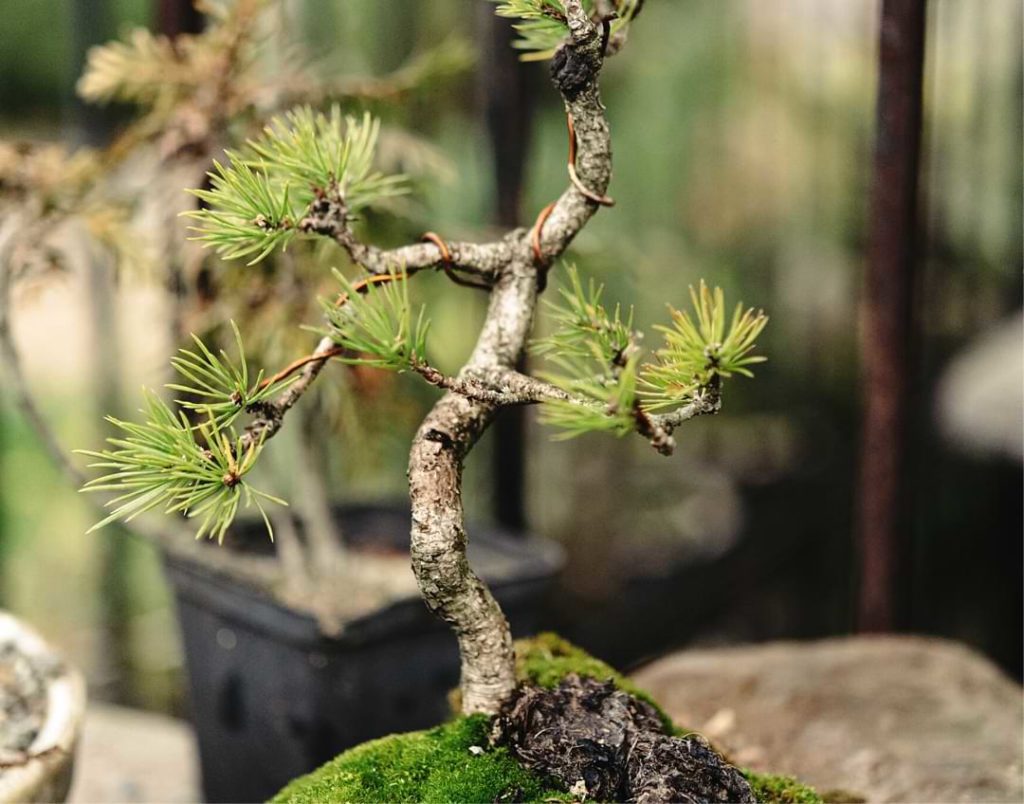A Quick Primer on how to wire Bonsai Trees for Beginners!
Why Do We Wire Bonsai Trees?
Part of what makes bonsai trees so captivating is the striking shapes in which they’re grown. But eye-catching traditional styles—like Shakkan (slanting) and Kengai (cascading)—didn’t just occur naturally. They are the result of years of painstaking care and guidance.
Wiring is one of the key elements in achieving these remarkable shapes. By applying wire in multiple stages throughout a bonsai’s lifetime, we are able to guide new growth to create the desired aesthetic elements in the tree.
Do You Have to Wire Bonsai Trees?
While it’s not a prerequisite, wiring is a critical part of managing your tree’s appearance. You can keep your bonsai small with pruning alone but with much less control over the direction in which it grows. Depending on your end goal, that’s all right! But, to really reap the creative rewards of the art of bonsai, we recommend giving wiring a try. (We promise, it’s not that scary!)
When Should I Start Wiring My Bonsai?
Wiring typically begins once a juvenile bonsai has developed a well-established root system. That’s because younger trees still have a lot of growing to do and are flexible enough to bend without breaking.
If you begin wiring once your tree is older, its trunk will be denser and less malleable. This can make it difficult to achieve your desired shape. Another reason to start early is to avoid damaging the sensitive bark in some species of tree which recover much slower with age.
What Type of Bonsai Tree Wire Should I Use?
When selecting your wire, you have two main materials to choose from: copper and aluminum. Both types of wire have their pros and cons. Copper is stronger than aluminum; its durability means that it stays in place better, but it requires a watchful eye, as it can dig in and cause wire bite more easily.
We recommend starting with aluminum, which is more flexible and forgiving. Aluminum bonsai wire is slightly less stable than copper, but you risk less long-term damage if you slip up and leave it on too long.
Bonsai Pro Tip: Whichever material you choose, use wire about ⅓ the diameter of the branch or trunk being wired.
How to Wire a Bonsai Tree for Beginners!
Step 1: Determining When to Wire
- As mentioned, the best time to begin to wire a bonsai tree is when it’s young and healthy. (Never wire an ill or distressed tree.)
- Deciduous trees are best wired in early spring—before new buds appear. This gives you the best view of your tree’s true shape and allows you to optimize the upcoming growing season.
- Coniferous trees are better wired later in the year, from the end of autumn to the start of winter. At this time, your tree’s growing process will have slowed and there will be less sap high in the branches, increasing flexibility.
Step 2: Selecting Where to Wire
When deciding where to apply wire, it helps to have a picture of the end result in mind. Apply wire to any portion of the tree you wish to shape in a new direction. This could mean wrapping the entire specimen or only certain branches. We recommend double-wiring whenever possible; this entails wrapping two branches of similar size together to increase stability and reduce the risk of snapping.
Step 3: Applying Wire to Your Bonsai Tree
- Anchor the base: If you’ll be wrapping the trunk, insert the wire flush with the base deep into the soil until it feels stable. Coil twice around the base and continue up the trunk. (Always start from the thickest part of your tree and work your way upward and out.)
- Anchor to the trunk: When wiring branches, always wrap the wire twice around the trunk and work your way to the tips. (This applies to both double- and single-wiring.)
- Double-wiring: Always work from the trunk outward. Wrap from the base of one branch all the way to the tip and then start wrapping around the second branch the same way.
- Single-wiring: Follow the same steps as above, but you won’t loop back to wire a second branch.
- Spacing and angle: Angle your wire at a 45-degree angle (pointing toward the branch tips) to allow the tree to increase in diameter while growing in the desired direction. Be sure to wrap with consistent spacing.
Step 4: Bending the Bonsai Tree Wire
Once you’ve fully applied your wire, the fun begins! Hold the outside of the branch (aka the side facing the direction you want it to bend) and apply pressure to the inside of the branch as you slowly bend and secure it into position.
Step 5: It’s “Grow” Time!
Once you’ve finished, give your tree some shade and fertilize as you would normally. Watch your tree closely, and unwrap as soon as it begins to outgrow the wire. This is especially important for deciduous trees, which are wired right before the start of the growing season. If the wire is left on for too long, it can cause wire bite, which can weaken or scar your tree’s bark.
Step 6: Removing the Bonsai Tree Wire
Once you’ve determined it’s time to remove the wire, don’t try to save a penny by unwinding it. Your tree is healing and you need to be gentle. Trying to unwind the coils without cutting increases the risk you will snap or damage vulnerable branches.
Instead, cut the wire along every coil with a wire cutter (a bonsai-specific tool can make the process easier). If you have some wire bite (don’t worry, it happens!), carefully peel the wire away with pliers until you’ve made enough space to cut without gnashing into your tree.
Et voila! Go ahead and enjoy the fruit (trees) of your labor!
Have more questions about how to wire bonsai trees? Drop your queries in our Facebook group.
Bonsai With Us!
The Bonsai Resource Center is here to help you learn the best bonsai tree care and provide you with the tools you need to keep your tree healthy and strong. Explore our other articles, visit our online shop, and connect with other bonsai lovers in our Facebook group to learn everything you need to know about this rewarding hobby!
More Bonsai Tree Care Resources
The Only Juniper Bonsai Tree Guide You’ll Ever Need
Bonsai Tree Meaning: The Definitive Glossary of Bonsai Terms



